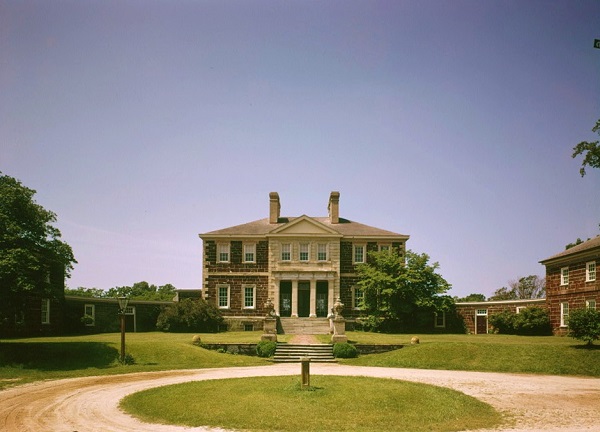The media is often accused of bias, particularly in matters inching anywhere close to race.
We hear this when there is a mass shooting of black people, or a black teenager shot by police, or black churches burning, or someone alleging a battle flag isn’t peaceful.
Here is what bias looks like on any boring old day, in the South—in the old capital of the Confederacy, no less.
A few days ago, Richmond’s major newspaper entertained readers with a frolicking journey to one of Virginia’s older homes. Mount Airy Plantation, exclaimed Katherine Calos of the Times-Dispatch, “is one of those important Virginia homes where important people have been doing important things for 250 years.”
Built in 1764, the historic property will star in HGTV’s American Rehab: Virginia, a 10-episode program which debuts July 8th on the DIY Network.
The article went on to highlight the economic boom the television production brought to the local community— the connections to various legends (Marquis de Lafayette and George Washington were guests here, while one of the more famous Lees is buried on the property); the associations with thoroughbred horse racing; the honor of the heir in taking up the challenge to restore the old place; the charm of young children attempting renovations; and so on and so forth.
The article failed to mention the plantation’s notoriety as a place of meticulously documented, especially horrendous activity during the age of slavery.
Richard S. Dunn, Professor Emeritus at the University of Pennsylvania, has spent four decades researching enslavement at Mount Airy. He has summarized the enslaved experience here as “Uncle Tom’s Cabin writ large.”
Dunn’s book on the subject, A Tale of Two Plantations, compared enslavement at this site with that at another plantation in Jamaica. His research revealed Mount Airy’s appalling involvement with the interstate slave trade: Over 200 “surplus” human beings were torn from their families and shipped further south.
When Dunn’s book was published, yet another local news outlet interviewed the heir of the property—the descendant of those slave trade masters. The heir’s response was laden with empathy for those who suffered at the hands of his ancestors:
“Slavery is part of the story here at Mount Airy and part of our shared history…. To ignore it would be wrong and would not pay tribute to the men and women and children who lived here and worked here under forced servitude.”
This man’s position is a difficult one; his responsibility in this time and place is grave, his heart undoubtedly heavy, and he is not to be envied.
The good news: During that earlier interview, rather than hiding his ancestor’s deeds, the homeowner seemed intent on confronting them:
“As the owner of Mount Airy, it’s important to me in this day and age to remember the horrible acts that were committed in the name of slavery, and to teach my children why it was wrong.”
He went on to welcome inquiries from those seeking information about enslaved ancestors.
That interview suggested some hope that HGTV’s sponsored renovation will enable those who suffered in this place to finally be memorialized in an appropriate manner. How the program will address the story of slavery, if at all, is unclear from episode descriptions.
One can see how the show’s handling of this issue could possibly cause concern.
But the Richmond Times-Dispatch just twirled past any potential controversy:
Preserving the history was an important consideration in the west wing, which originally was where house servants lived and worked…. In recent times, it was only used for storage. Bricks were crumbling. Plaster was cracked.
These lines were attributed to the homeowner, but not as a direct, word-for-word quote. From this presentation, it appears that the reporter has summarized the man’s statement.
Apparently, the major newspaper of Richmond cannot bring itself to utter the word “slaves.”
A television network’s agreement to bankroll a plantation’s renovation and broadcast its story to the nation—a nation currently in the midst of impassioned debate over issues of racism and history—is a big deal.
This could be a powerful step toward healing a community’s painful past.
This could be a perfectly-timed conversation starter.
This could be a badly-needed example of Southerners facing their ghosts head on, and conquering them.
Or it could become one of the grandest whitewashings of our age.
It seems clear where one Southern city’s primary newspaper stands, and this is tragic.
This is what everyday bias looks like.
Relephant:
How Racism Survives.
~
Author: Katie-Anne Laulumets
Editor: Travis May
Photo: Wikipedia- Mount Airy Plantation











Read 3 comments and reply